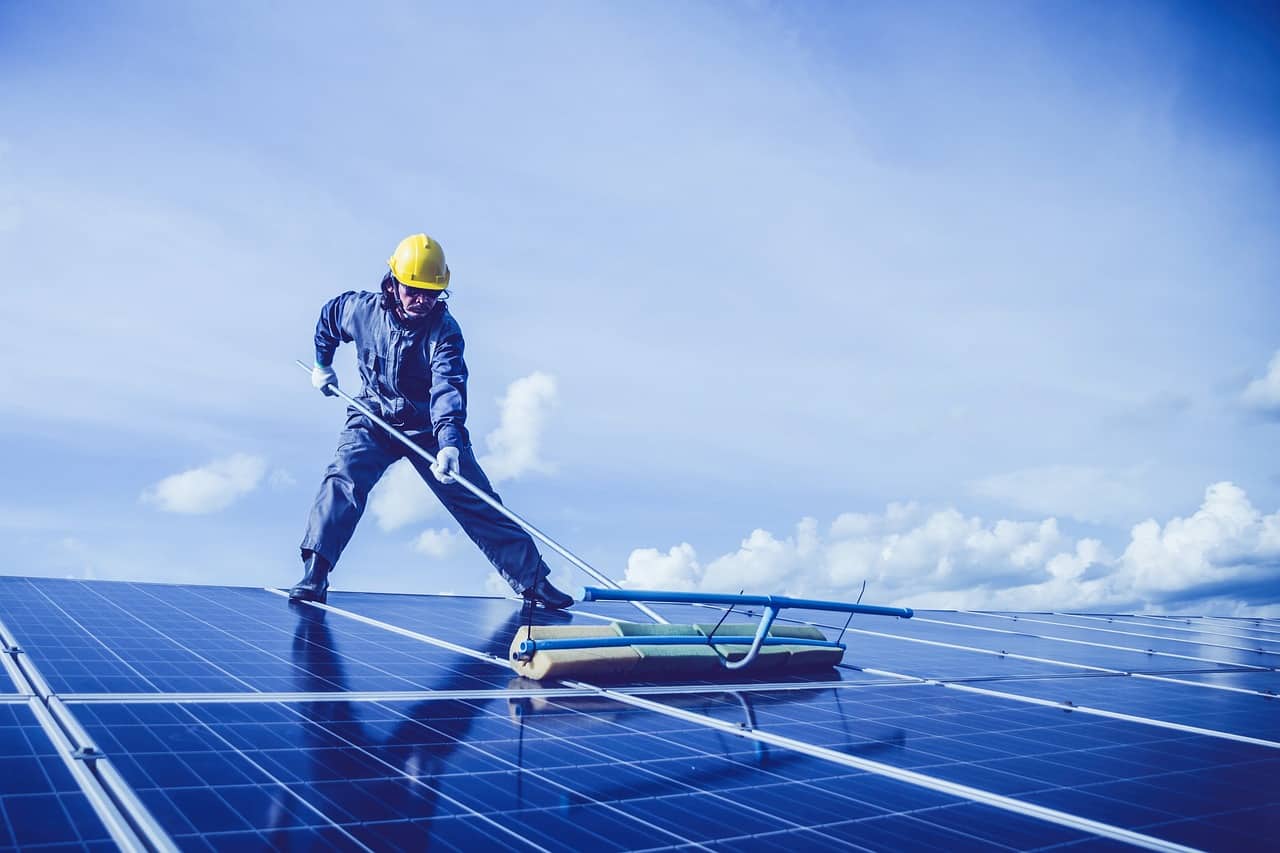There is a limit to how much heat solar panels can handle and fire damage can make them dangerous.
Solar panels tend to be incredibly resilient to high temperatures because they have to sit in the hot sun all day to produce electricity. Still, there is a limit to how much heat they can handle. Fire damage can make them dangerous for use even if they appear fine. Is it time to fireproof solar panels?
There were nearly 2 million solar panel installations in the United States by 2021 and they have been becoming even more popular as their price drops. Although it’s great that they’re becoming more accessible for the average person, their widespread use highlights previously overlooked issues.
Solar panels are typically designed to endure extreme weather and are incredibly durable. Still, they’re not fireproof and can be dangerous if they catch on fire.
Because they convert energy into electricity, they pose an electrocution risk for firefighters and homeowners. On top of that, the owner can lose out on an expensive investment if the parts are not salvageable.
Do solar panels pose fire safety risks?
Although it is uncommon, the risk can come from the panels themselves. The solar cells can’t cause fires on their own, but faulty wiring, poor installation and defective parts can. If someone builds or installs them incorrectly, they risk starting a fire.
It is especially concerning for roof installations because homeowners might be unaware of any issues. The effects might start small, but slow-burning fires cause extensive damage because they go unnoticed at first. Panels don’t often spontaneously burst into flames but can pose fire safety risks.
While solar panels can withstand long-term high temperatures, they do not handle sudden and intense heat well. They are resilient enough to function properly at up to 149 degrees Fahrenheit (65 Celsius), which is usually fine since temps don’t naturally soar that high. However, fires can get hotter much faster than they can handle.
A fire can reach up to 600 degrees Fahrenheit (315 Celsius), meaning there’s a strong chance solar panels won’t withstand the heat. Obvious signs of fire damage include scorch marks, melted components, discoloration and cracks. Even if there is no visible damage, a panel may still be significantly affected. Since intense heat can warp metal components, the damage may be internal and hidden from view.
On top of damage from direct exposure to fire, panels can also face challenges from nearby wildfires. For example, the smoke, soot and ash can cover the casing and make it impossible for the solar cells to receive sunlight. Depending on their proximity to the fire and smoke, they might be temporarily rendered useless.
Are there any fire safety regulations?
The Australian government began conducting fire safety tests to measure their resilience in response to an increase in fires caused by solar panel component failures. Researchers monitor how the panel reacts or degrades to different types of fires. The purpose is to give a fire safety classification that consumers can use to inform their purchasing decisions.
Even though there are methods to measure the resilience of panels exposed to fire, few relevant regulations exist. For example, although the European Union has a fire rating system for solar modules, it doesn’t mandate manufacturer ratings.
While various entities are testing solar panels or producing fire safety measurements, general rules still need to be implemented. Predicting and preventing wildfires may not be possible, but people can make parts more fire-resistant and ensure they’re installed correctly.
Ideally, manufacturers and governments would work together to make modules fireproof before putting them on the market. However, most aren’t even fire-resistant. While no method guarantees the complete protection of the solar panel, it can still be useful to protect it partly.
If no fire safety rating is available, it might be best for people to use their own fireproofing method. For example, intumescent paint offers up to 120 minutes of protection because it rapidly expands in the presence of fire to protect everything underneath it. It can’t cover everything because solar cells need transparency to work, but it can still be useful in addition to other methods.
Ordinary glass shatters when exposed to intense heat, but various types can withstand high temperatures. Some types of laminates and glazes are fire-resistant and can remain intact even after prolonged contact with flames. Fireproofing each external element can help protect the panel.
Why should solar panels be fireproof?
People need fireproof solar panels because it establishes a basic layer of protection. For many, wildfires are common occurrences. Those who rely on solar energy risk repeated power outages in times of crisis. It also ensures security for their investment. Panels can be expensive, so owners may feel relief knowing a fire won’t immediately destroy them.
On top of that, fire-damaged solar cells produce less energy and pose unique safety risks. Fires can spread quickly — especially in dry or windy climates — which risks nearby buildings. Fireproofed solar panels ensure the cells produce power at the same level and protect against collateral damage.
People who feel secure about solar panel installation and use may be more inclined to switch to sustainable energy. Continued widespread solar panel use relies on improved safety measurements, including fireproof manufacturing and proper fire ratings.
Solar panels are affected by nearby fires and can even pose a fire risk. Even if they seem fine, they’re not meant to withstand such high temperatures. Fireproofing can ensure homeowners and neighborhoods stay safe by protecting against damage and future related issues.
This story first appeared on Sustainability Times
© 2023 Sustainability Times.
This article is licensed under a Creative Commons Attribution-ShareAlike 4.0 SA International License.












